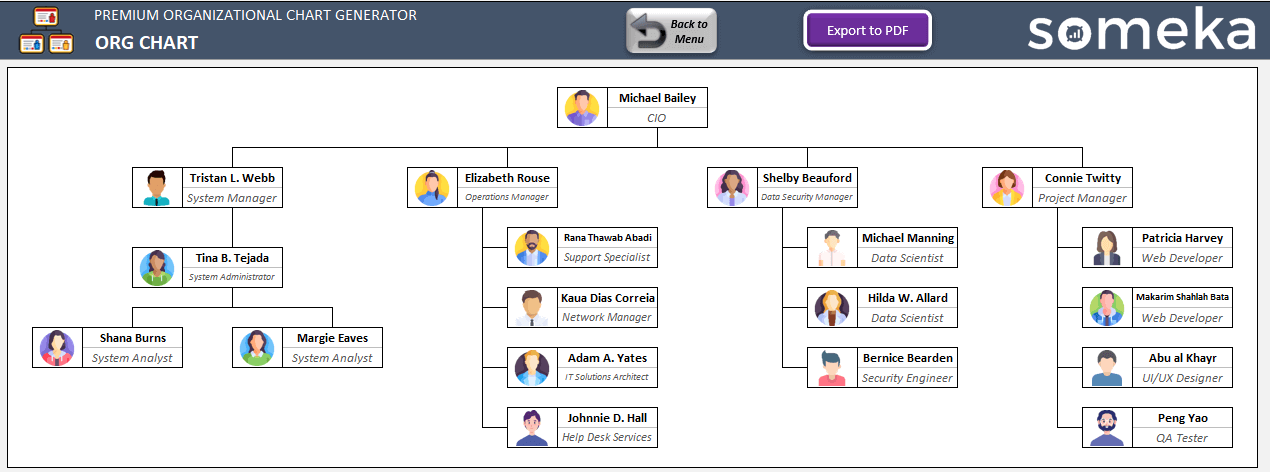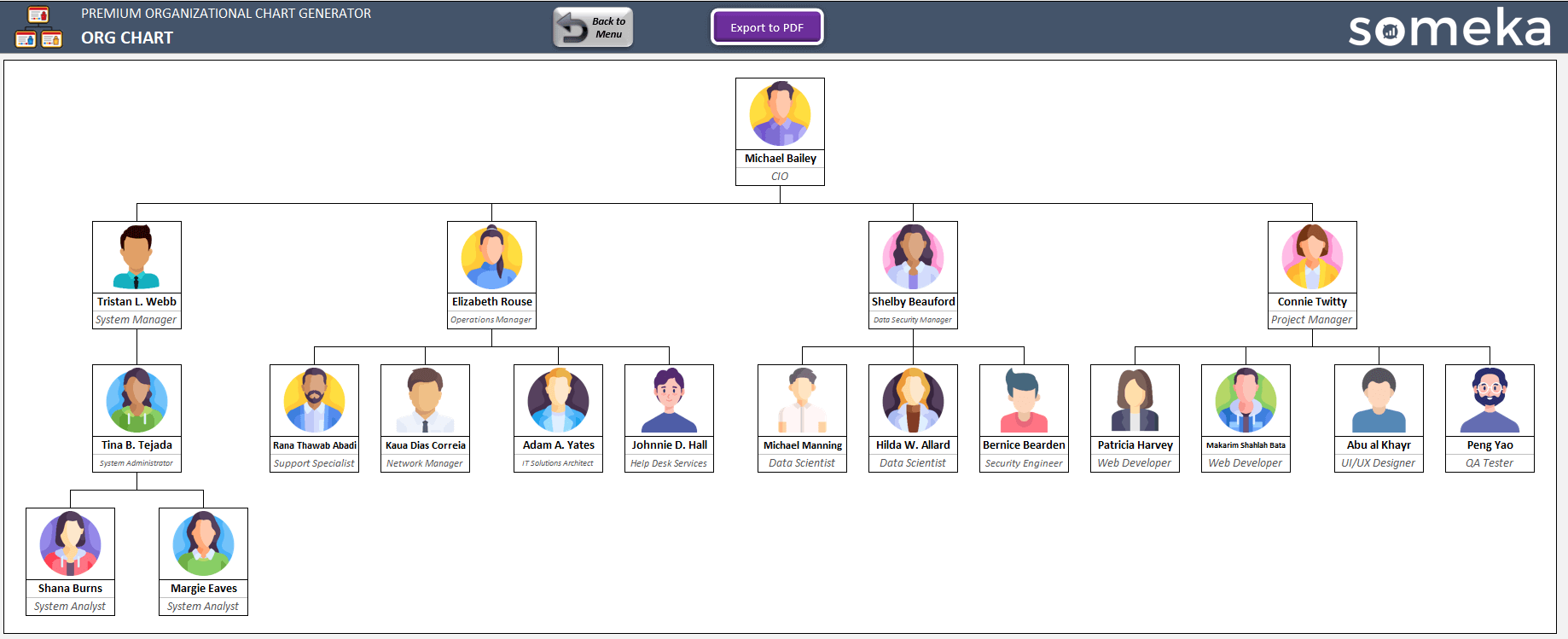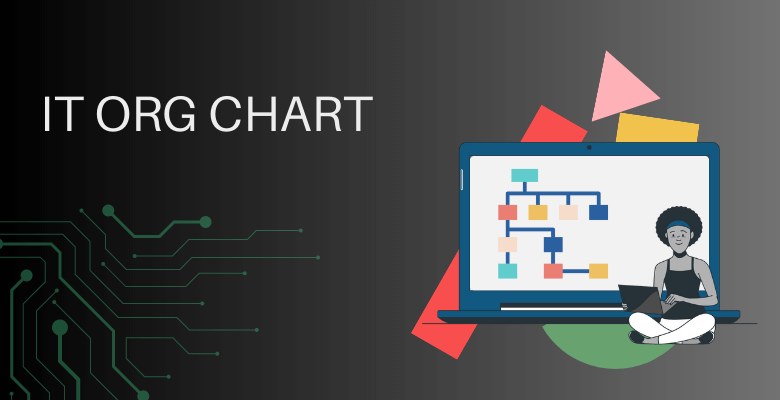
IT Org Chart: Ultimate Guide To Structure An IT Team
IT departments are the core responsible teams to implement and maintain information technology systems in a company. But how to form an IT org chart for your business? So, here’s a complete guide with step-by-step instructions and definitions.
Table of Content
- What is the IT department?
- What is the role of IT service team?
- Where’s IT department in company org chart?
- IT Organization Structure
- IT Org Chart Positions
- How to create an IT Org Chart?
- FAQs on IT Org Chart Structures
1. What is the IT department?
Firstly, IT department is a team of people responsible for the installation, integration and maintenance of information technologies in a business. Additionally, they give technical assistance to the whole organization on daily technologic issues concerning computer network systems or any other hardware or software problems.
Lastly, the number of IT team may differ according to the particular needs of the company. Some companies have only one IT employee, whereas most companies have in-house IT teams of 2-50 employees.
2. What is the role of IT service team?
IT services may have a very wide range of responsibilities according to the business sector and company size. Here are some of the common responsibilities of IT teams:
- Installation & Maintaining IT Systems: IT systems are the core of all operations in a business. They integrate different departments and operations and provide communication among all teams. And usually, these systems need a big amount of investment, both in terms of money and also time. So installation of these services involves considerable expertise in terms of technical side. IT teams deals with the implementation of these services. Even if the whole system is outsourced by a third company, these kinds of big operations need regular maintenance.
- Automation Processes: IT teams also deal with automating the business operations. They adapt communication and automation systems to integrate every tiny piece of the operation. They are usually supported by professional business analysts to understand the general workflows and needs of the company.
- Technical Assistance: IT people are usually one of the best supporters of the whole organization. They provide technical assistance to the whole team about networking systems, computer hardware, software, 3rd party systems, applications, or any other technical issues.
- Data Management: The IT services also install and maintain the needed system to store, process, and protect the business data. This also involves system security. As technological services are prioritized for seamless business operations, understanding cloud platforms becomes essential. With the sector’s increasing dependency on technology, equipping IT teams with relevant skills can streamline operations and increase efficiency. Exploring DataCamp’s innovative cloud courses offers organizations a pathway to enhance their IT department’s capabilities through comprehensive curricula designed for all proficiency levels—bolstering both technical acumen and adaptive problem-solving skills within the rapidly evolving digital landscape.
- Technological Procurement: Because of their expertise in technology, dealing with 3rd party service providers is also usually among the roles of IT people. They contact service providers for external software needs, cloud services or other technologic needs. This will also involve vendor risk assessment for these providers, as technological services are among the most important, sensitive and also vulnerable parts of the companies.
3. Where’s IT department in company org chart?
According to the needs and corporate culture of the companies, the IT department’s place on the org chart may differ. But most companies have a CTO (Chief Technology Officer) reporting directly to the CEO. The below c-level organogram shows the place of IT heads.
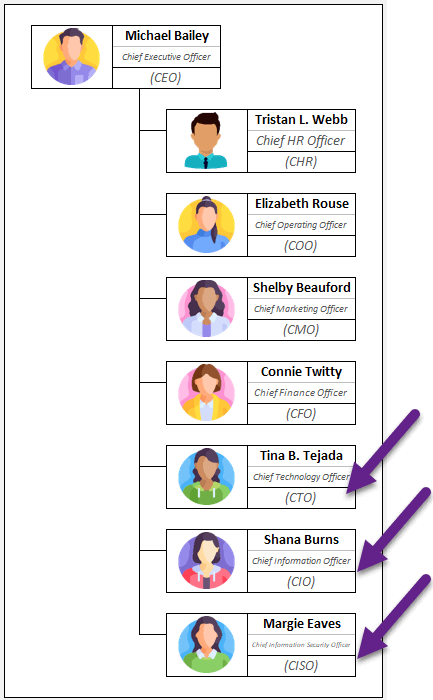
The company may also have a separate CIO (Chief Information Officer), responsible of organization’s information technology operation, and/or CISO (Chief Information Security Officer) with a responsibility in the security of the information systems.
Some small companies may place their IT teams under operational services.
4. IT Organization Structure
Companies may implement different approaches to the structure of the IT teams.
Centralized IT Organization Structure: If all the IT networks are directed from a central hub, then we can talk about a centralized structure. This approach will bring a more standardized and easier management system for the whole information technologies services. On the other hand, it is obvious that these centralized structures may slow down the decision mechanism and decrease operational effectiveness.
Decentralized IT Organization Structure: Some companies prefer separating IT systems and managing each hub from a different control system. In other words, all IT responsibilities are divided into different hubs, and run individually. So this approach usually brings agility to services, while creating a risk of non-standard practices.
These structures may have project teams, support teams, operation teams, development teams or process teams according to the particular needs of the business.
5. IT Org Chart Positions
IT teams may have various roles and positions. The below list will give you a short summary of the most common roles in IT departments:
– This Image is Created with the Org Chart Maker by Someka –
- CTO (Chief Technology Officer): This position is responsible of the entire technology department and reports directly to the CEO.
- CIO (Chief Information Officer): This chair is in charge of the strategy and implementation fo the whole information technology system of the company.
- CISO (Chief Information Security Officer): This is another c-level position in charge of installing and maintaining the information security program of the business.
- IT Managers: According to the needs and functions of the IT team, this position may include IT Project Manager, IT Product Manager, or coordinator.
- IT Network Manager: This management level is also responsible of the networking systems with network engineers, architects and analysts reporting to it.
- Developers: One of the core positions of IT teams is the code-writers. Some companies have in-house developers, whereas some prefer outsourcing.
- Designers: The IT teams may need UI/UX designers to make their software or applications more user-friendly.
- IT Analysts: These employees may have different expertise areas to analyze and improve the systems continuously.
- QA Testers: These teams are responsible of making Quality and Assurance testing of the systems, software or applications, including desktop application testing services, ensuring overall functionality and compliance with quality standards.
- QA Engineers: Exploring the QA engineer career path involves a journey through rigorous testing of software systems to ensure their quality and functionality.
- Security Engineers: These teams are responsible of protecting the information technology systems of the company against possible threats.
- Data Scientists: These employees or in other terms the data analysts implement, maintain and improve the systems of the business to instore, process and protect the data.
There may be of course many other roles in an IT team varying according to the size and needs of the IT department and more generally the company:
Data Management:
The IT services also install and maintain the needed system to store, process, and protect the business data. To enhance this protection, implementing a vpn auto connect feature ensures continuous security of data in transit. This also involves system security, which is critical for safeguarding business operations and sensitive information.
6. What’s IT Org Chart?
In summary, IT org chart is the visualization of the hierarchical levels of an IT department.
Therefore, this diagram shows the relationships between IT employees, highlighting the internal reporting model of the whole department.
As other departments, the IT departments may prefer different types of organization charts such as flat org charts, matrix org charts and functional organization structures etc. You can use organization chart templates for IT companies.
7. How to create an IT Org Chart?
Here’s a step-by-step guide about how to create an IT Org Chart:
#Step 1 – Deciding on the org chart type
Firstly, you should decide on the overall reporting process of your IT department, and then choose which organization chart type suits your needs.
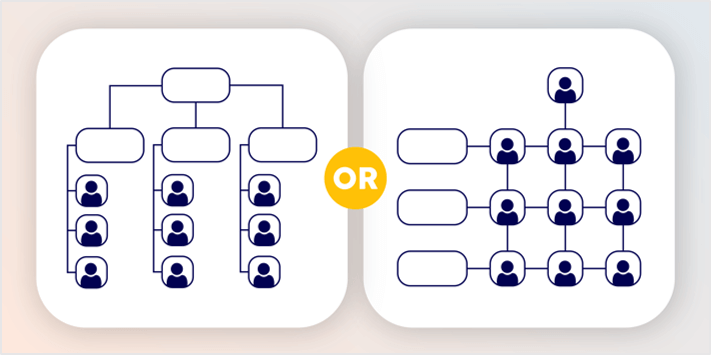
#Step 2 – Preparing the draft
After clarifying the roles and reporting hierarchies of your team, you can prepare a draft of your it org chart diagram.
#Step 3 – Choosing the suitable platform
First of all, there are many tools and software for making org charts. So, you can use Microsoft Office programs like Word, Excel, Powerpoint or Microsoft Visio software as well as other platforms like Google Sheets or Lucidchart, etc. Also, there are various methods to create org charts in Excel, and also in other platforms.
#Step 4 – Finalizing the org chart
According to the platform you use, you can easily adapt your draft to the final org chart diagram.
And, you can use our ready-to-use Excel template for creating your it organization charts. So, all you need to do is inputting your employee data and click on a single button, and your chart is ready.
You can export to pdf with one click to create an IT org chart pdf file:
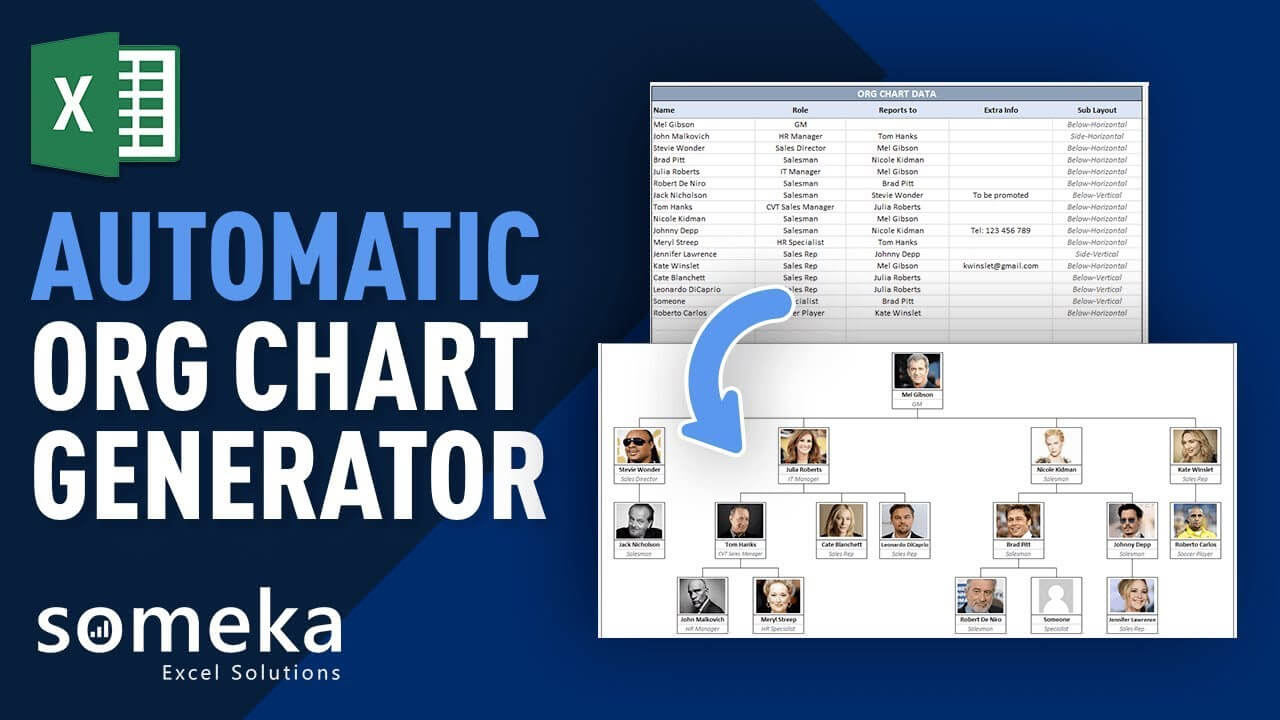
Download Automatic Org Chart Generator from Someka
Additionally, here’s how our template works:
You can visit our org chart tutorial video to learn more about how to make an org chart.
8. FAQs on IT Org Chart Structures
1. Who does information technology report to in a typical org chart?
Firstly, in a typical organizational chart, the head of the information technology department reports directly to CEO. Also, the head of this level might be CTO, CIO or CISO.
2. What is the best organizational structure for a technology company?
This mostly depends on the size and needs of the company. However, the most common type of org chart for tech businesses might be the flat structure. In this horizontal structure, the managers are directly in touch with stuff, without any middle management level.
3. How big should be a IT team be?
This also depends on the functions of IT department. But it’s usually recommended to have 8-20 people in an information technology department to ensure healthy communication and work distribution.
Recommended Readings:
Why Organizational Charts Are Important?
Questions You Should Ask Before Creating Org Chart For Your Company


